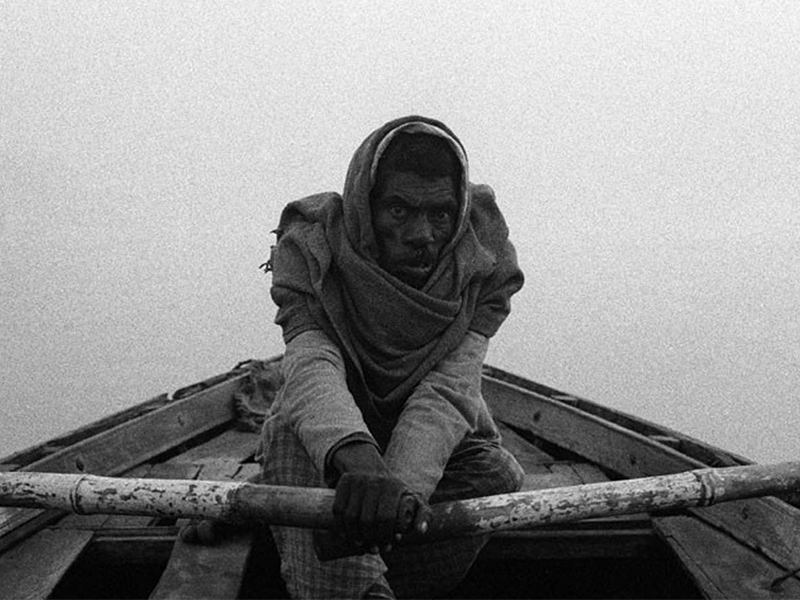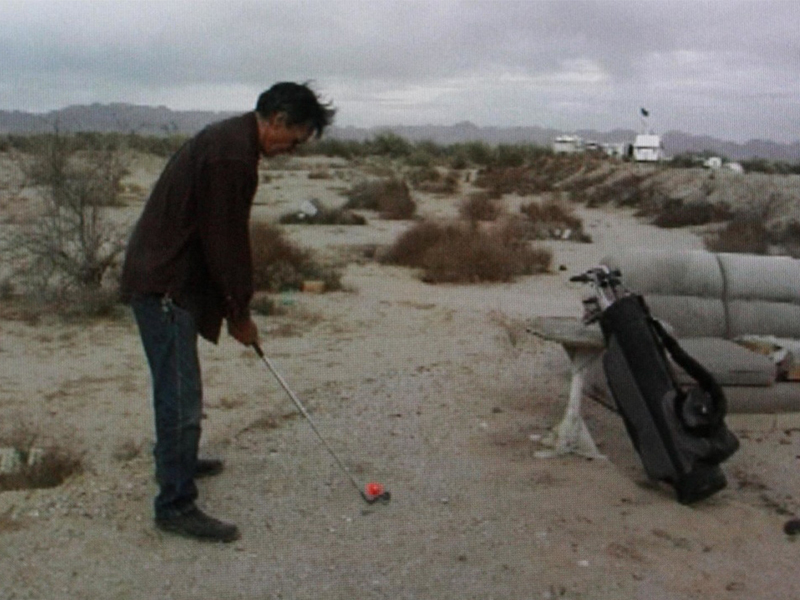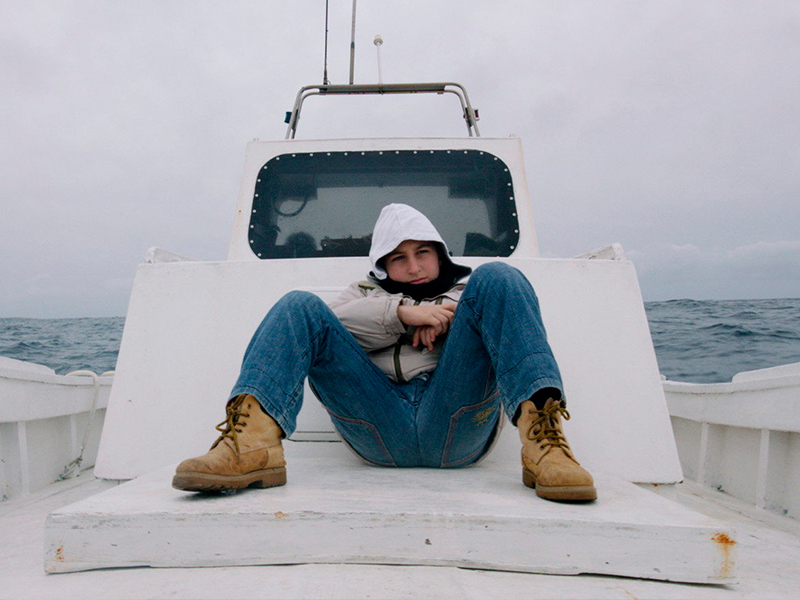Gianfranco Rosi x5: The Butterfly Effect
There’s some connection between the Italian-American filmmaker Gianfranco Rosi and the achievements that documentary film has gained in festivals in the last years: Sacro Gra, winner of the Golden Lion at the 2013 Venice Film Festival, or Fire at Sea/Fuocoammare (2016), winner of the Golden Bear at the Berlinale of that year. Bringing the documentary into the spotlight, on the same stage with fiction films, which inevitably will always have the upper hand, was a novelty. With the exception of festivals dedicated exclusively to this genre, documentary film will always be the underdog. Anyhow, it was never about lack of talent or remarkable titles, but it’s quite possible that an important factor in recognizing Rosi’s work was precisely his modus operandi, which allows its topics to develop over several years and leads with an indulgent, expectant look, that doesn’t force its subjects and doesn’t interfere in any way with the natural course of action. Most of his films are one-man-shows, meaning that he is his own DOP and sound designer.
Unlike the fly-on-the-wall documentary, which is often frustrating, shaky, with a camera closely following the characters’ movements, Rosi is static; he lies in wait for the right moments, and the action is captured by a still camera. It’s a fictional practice, in fact, which seems to extend to the narrative structure of Rosi’s films. It’s basically a matrix that gradually expands by adding all sorts of characters, to whom the director returns from time to time, following their evolution. For example, it doesn’t often happen when someone manages to build suspense around a love-hate relationship that a man has with some termites (Sacro Gra). The guy is obsessed with them, records their sounds, listens to them at night, can almost speak their language; it’s the same obsession that gnaws at one of the protagonists in Below Sea Level, who becomes mesmerized by the flies buzzing around his caravan after realizing that no spray can drive them out of it. Although Rosi returns only to some of the characters, making it seem like he lost track of the others or that there simply wasn’t room for them in the big picture anymore, these recurrent characters never end up meeting each other, as it would happen in hyperlink cinema (or, metaphorically speaking, the butterfly effect, ie an action that rebounds into another, in a different time and space), but rather, remain strangers to one another. In fact, Rosi often plays with this element: the immigrants from Lampedusa don’t even exist in the mere reality of the protagonist, a 12-year-old boy whose only concerns are seasickness and a lazy eye, although about half a mile from him people are literally dying of thirst, hunger or heat. The encounter – or, rather, the lack of it between these worlds – is the space where Rosi creates substance. Otherwise, some thematic similarities can be drawn between Rosi’s films, but they are not necessarily defining: almost all of them involve a transition (metaphorical or physical), even if we’re talking about rivers, a buffer zone between Italy and Africa, a highway that circles Rome, or literally the process of cathartic healing of a hit man employed by Mexican cartels who describes in detail how he killed his victims. While most of his characters are in transit or homeless, Rosi seems to frequently answer this question: how do people for whom home is an abstract notion actually live? I take advantage of the retrospective that Mubi dedicates to Gianfranco Rosi to discuss some of his films.
- El Sicario: Room 164 (2010)

I saw my first film by Gianfranco Rosi in my first year of college, in a cold room with about twenty more souls. I remember the moment because I thought it was colossal, an intimate docu-drama like I had never seen before. I’m talking about El Sicario: Room 164, about a repo man working for the Mexican cartels, the guy who does the dirty work, plans the kidnappings, covers their tracks, and so on. The hooded man opens up to the camera, in a motel room where he has dragged a lot of victims before. Because he can’t actually show his deeds (although he tries a few times to make a reenactment), he decides to draw on a notebook all sorts of complicated schemes, charts or actual rules to explain this job. The film is as minimalist as possible – it’s a documentary that takes place exclusively in a hotel room, during what appears to be a single afternoon. Rosi’s documentaries, as I found out later, have this quality of seeming implausible – even by the standards of fiction films, precisely because they give us access to worlds we only know from the news. The shocking information that El Sicario disclosed was not the way things worked in cartels, but the fact that the Mexican police played an important role in spreading these crimes; in fact, according to the protagonist, any man who graduated from the Police Academy had a secure place in the Cartel.
- Boatman (1993)

Rosi’s first documentary is about the immense entity of India, the Ganges river, the place where the locals wash, fish, walk their tourists, and bury their dead. Both a sacred place and a hotbed for infections, the river remains to this day the confluence of all social castes in India, fed by local mythology; in other words, the river flows from Lord Shiva’s hair, thus blessing the city. Rosi follows a boatman, a gondolier who otherwise takes the tourists up and down the river: amid stories depicting India’s shy attempts to industrialization (like the use of electric fire instead of the classical crematoria), the camera lingers on the extravagant-morbid riverscape, from the lifeless bodies of children floating on the water to antique sellers who stop your boat to entice you with an offer; it’s the same place where the locals clean up their horses and only a few feet away a couple of tourists gently wash their feet. Such a motley crowd is part of what obsesses Rosi: strong contrasts and collective tragedy.
- Below Sea Level (2008)

Below Sea Level addresses a similar topic as Chloe Zhao’s highly praised film, Nomadland, although, objectively speaking, Rosi’s docu-fiction seems much more involved in the evolution of its protagonists; of course, a counter-argument would be that Zhao has a single protagonist, while Rosi’s film has several central figures. For the most part, the film presents the small lives of people living in caravans, whose reasons for choosing this lifestyle we will find out along the way (personal problems, terminal illnesses, or an act of rebellion against the system). But what the camera manages to capture is very touching and emotional: a trans man who opens a barber shop in the vicinity of his caravan, another who plays his son a song that he is struggling to write throughout the film, two men who scatter the ashes of a friend a few feet from their caravan. In that regard, Zhao’s film is quite summary, it rarely reaches the heart of the problem, the unique moments when the protagonists find joy in something incredibly small, as it happens here: a new hammock, a wig received as a gift, a page from a philosophy book.
- Sacro GRA (2013)

The link between the characters in Sacro GRA is the simple fact that they live near Grande Raccordo Anulare, the ring-road highway that surrounds the outskirts of Rome: fishermen, prostitutes, various people with unusual hobbies (studying the sounds made by termites, renting the villa for shows and performances). Unlike other titles in his filmography, Sacro GRA doesn’t seek to support or illustrate a thesis, but is purely contemplative, showing a counter-cinema that portrays the prevailing image of Rome. Sometimes is difficult to understand where the camera is set (for example, the top shots showing three families in their apartments, a young woman and her father, a DJ, a single woman talking on the phone, and the only thing that unites these images is the soundtrack, which comes from the DJ’s apartment). Other times, the action itself seems to be filled with all sorts of gaps; it’s Rosi’s way of showing how many things he missed out in the mammoth reality that surrounds him.
- Fire at Sea (2016)

I saved the heavy stuff for last – that’s also because Fire at Sea is, together with Notturne, Rosi’s latest film, about the migrant crisis, about the war on starvation and poverty, but also about the risk of plunging into the unknown. It’s about the hundreds of thousands of immigrants who left Africa for Europe for a better life and lost their lives on the way. At the opposite end, it’s the world of the locals, who carry out with their lives more or less aware of this drama: for them, as Rosi points out in interviews, refugees are seen as aliens. In one of the most important sequences, hundreds of immigrants, all wrapped in thermal blankets, get off the ship in the middle of the night, and then go through an alienating examination process – many of them no longer have the courage or respite to even attempt a smile, there are so many of them who did not reach their destination, is this the paradise they imagined when they left their homeland?
Journalist and film critic, with a master's degree in film critics. Collaborates with Scena9, Acoperișul de Sticlă, FILM and FILM Menu magazines. For Films in Frame, she brings the monthly top of films and writes the monthly editorial Panorama, published on a Thursday. In her spare time, she retires in the woods where she pictures other possible lives and flying foxes.
